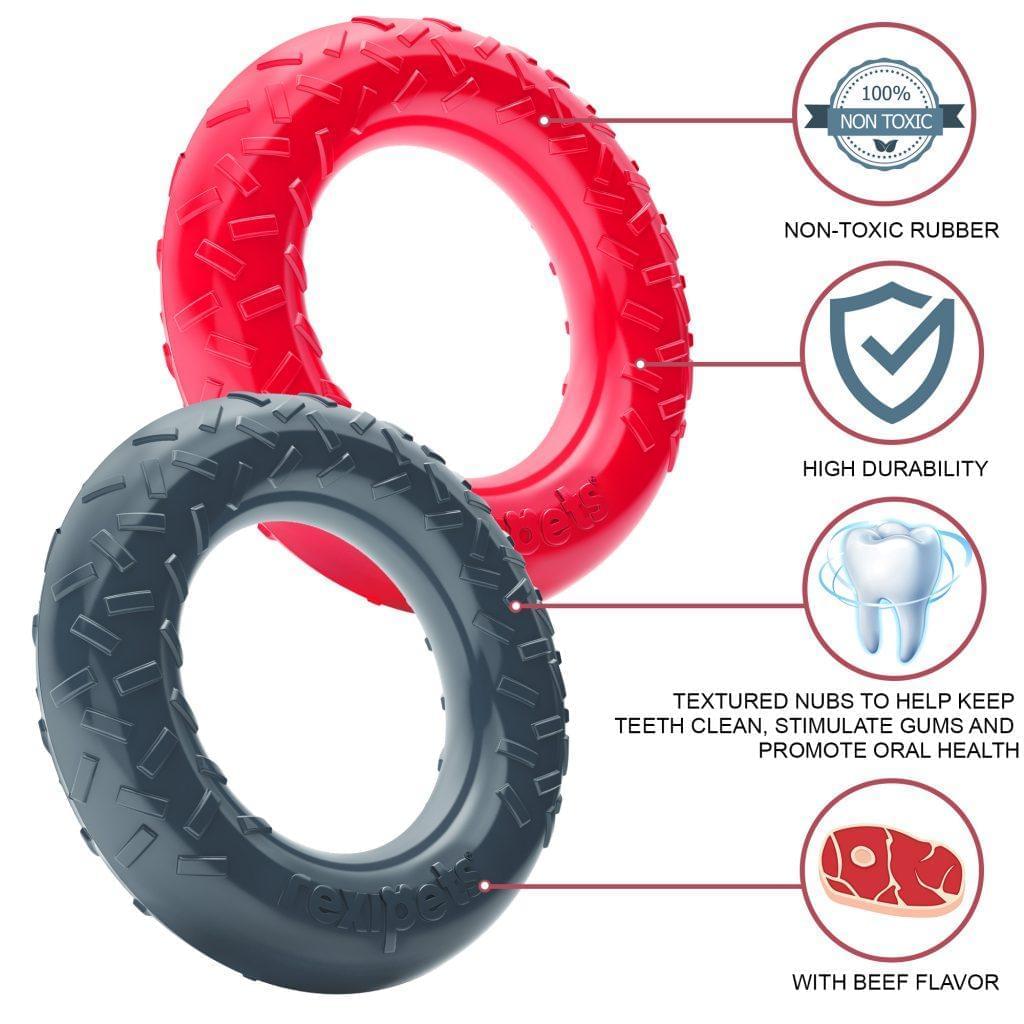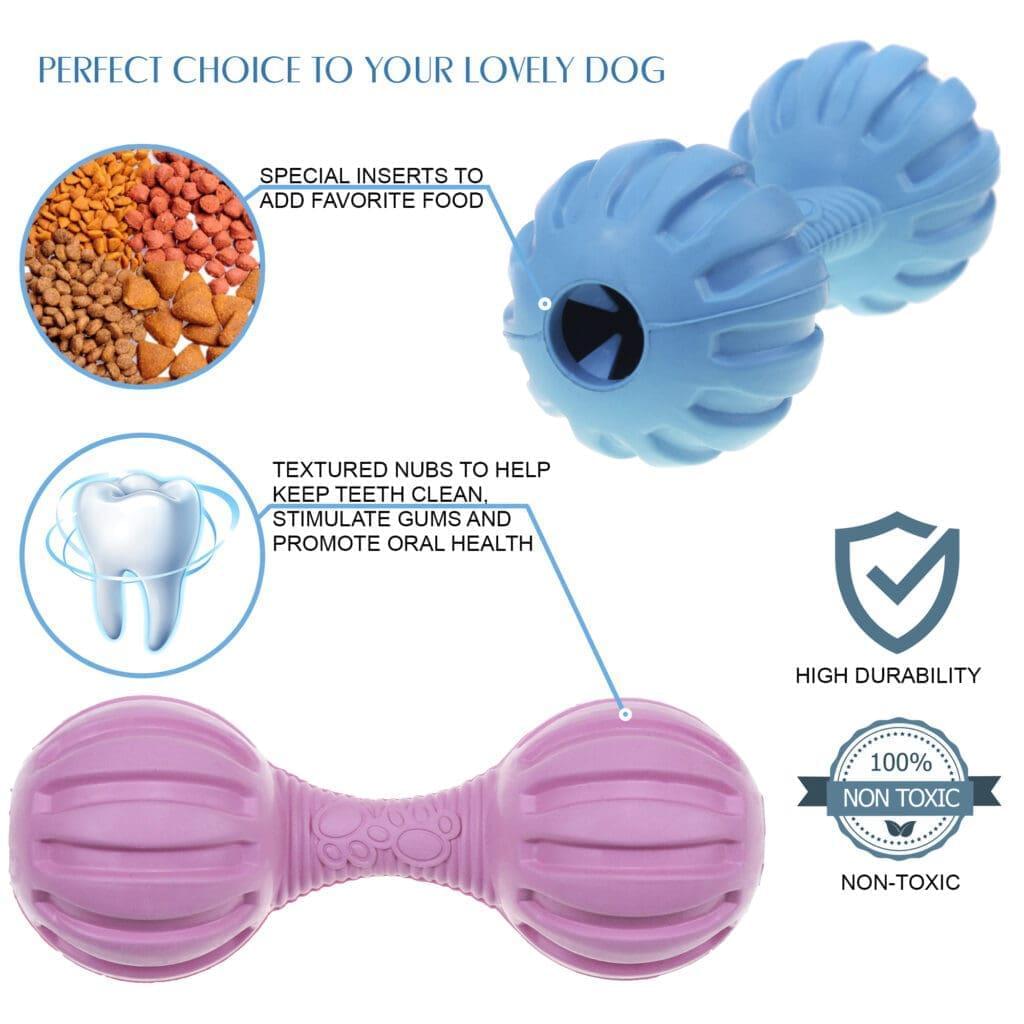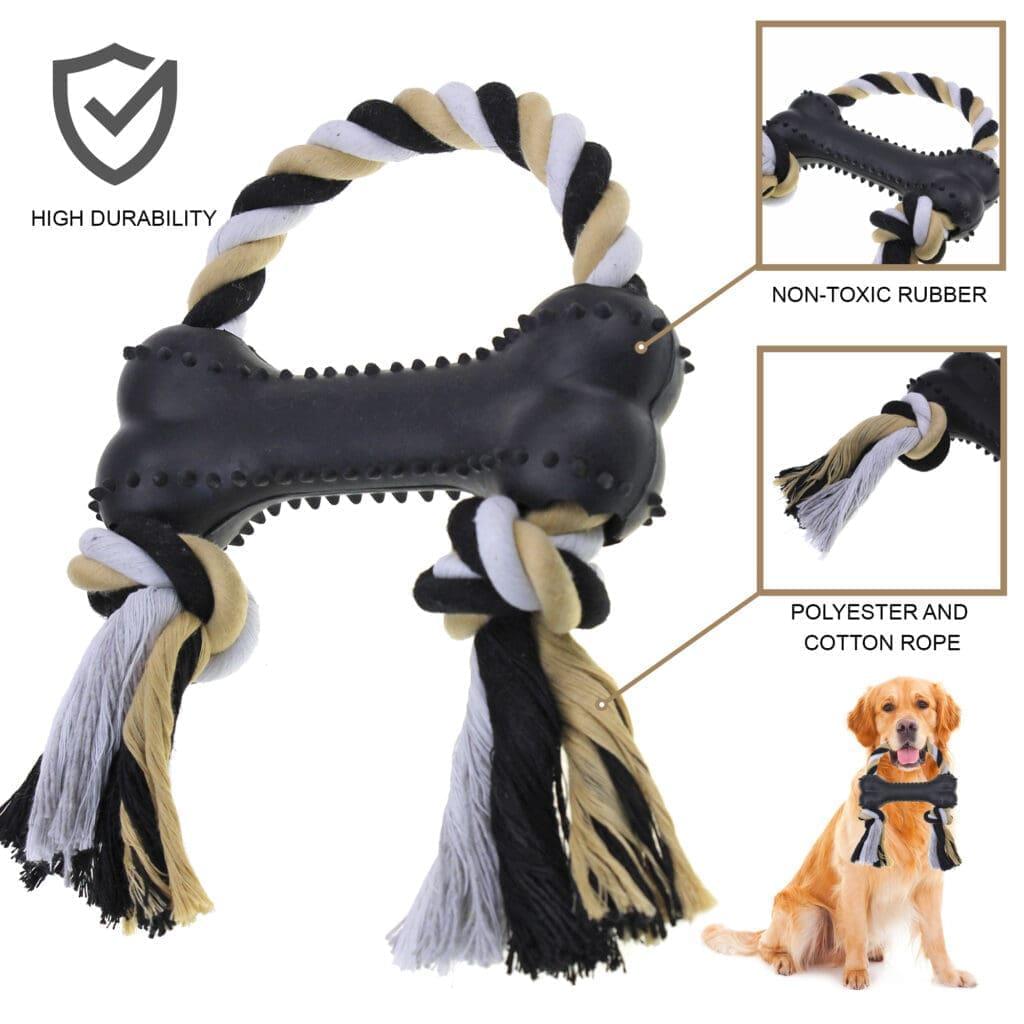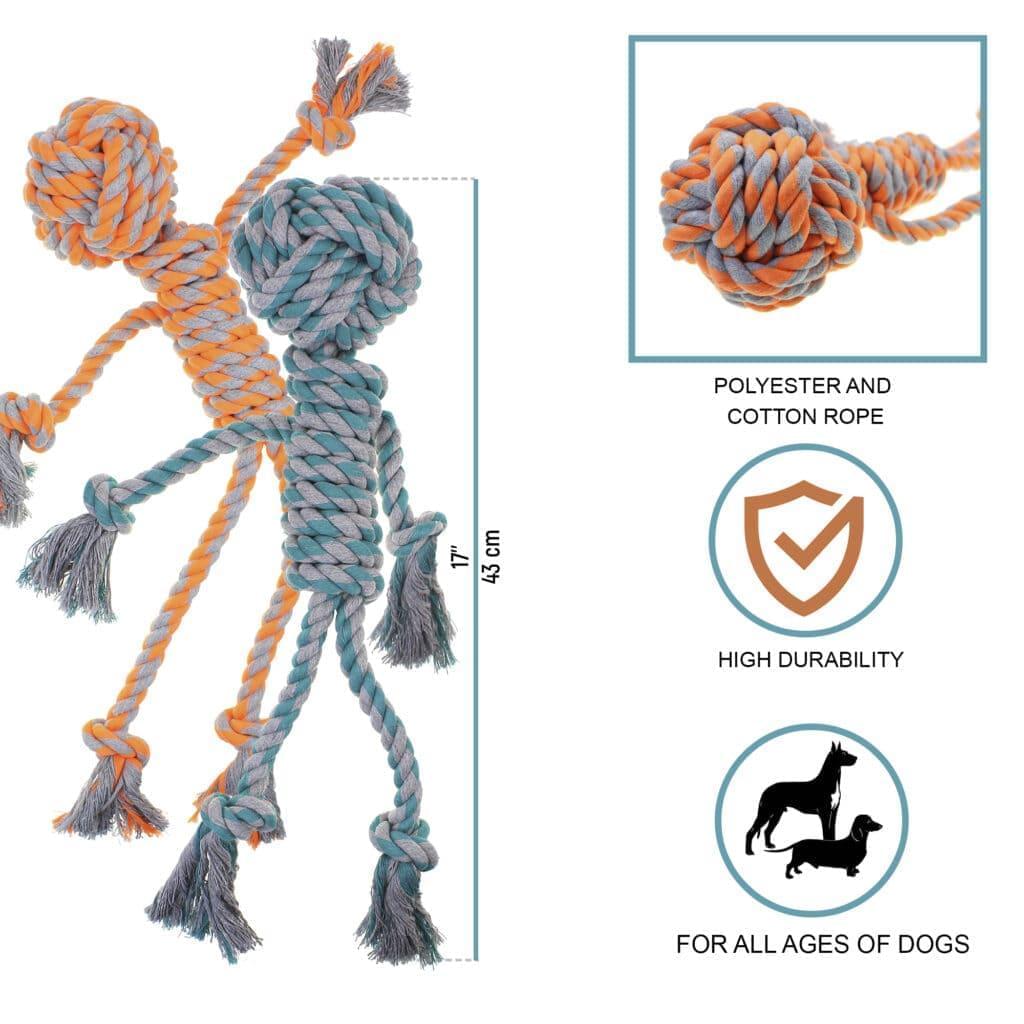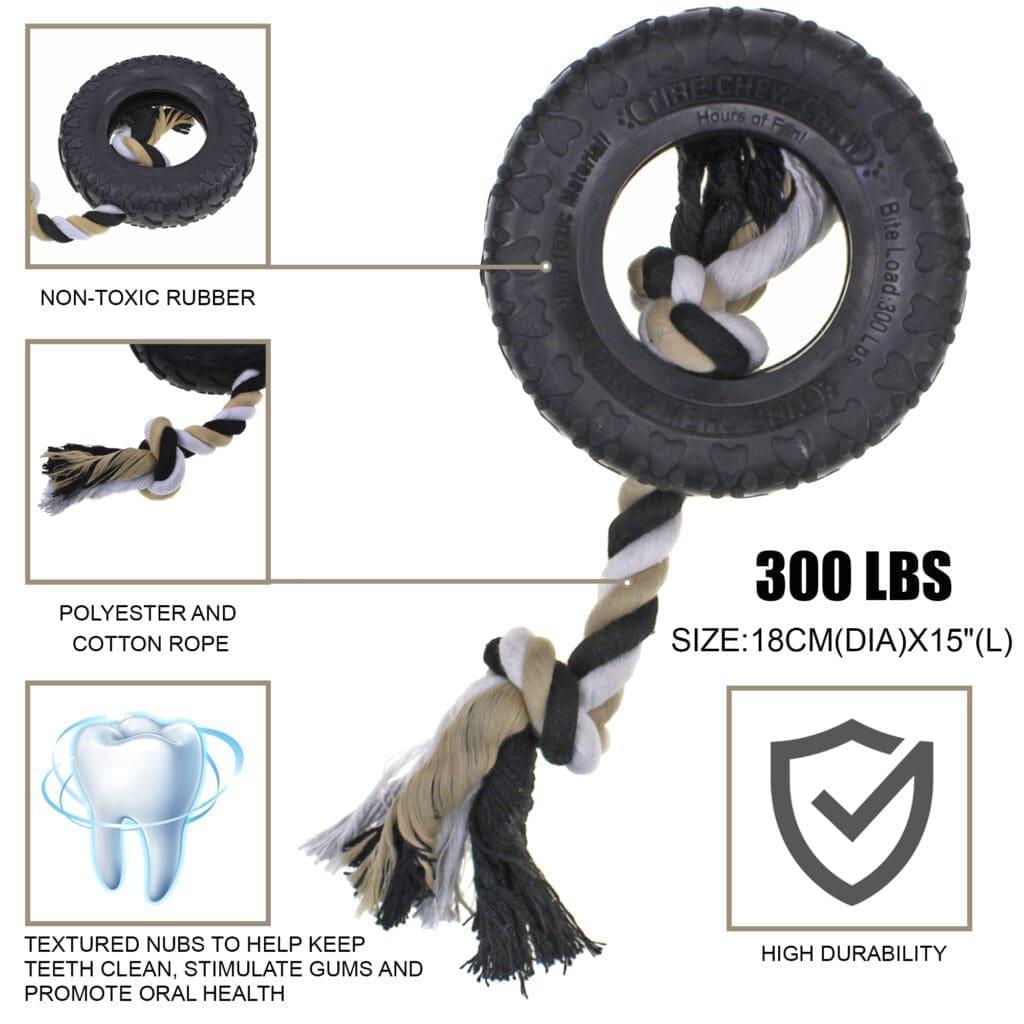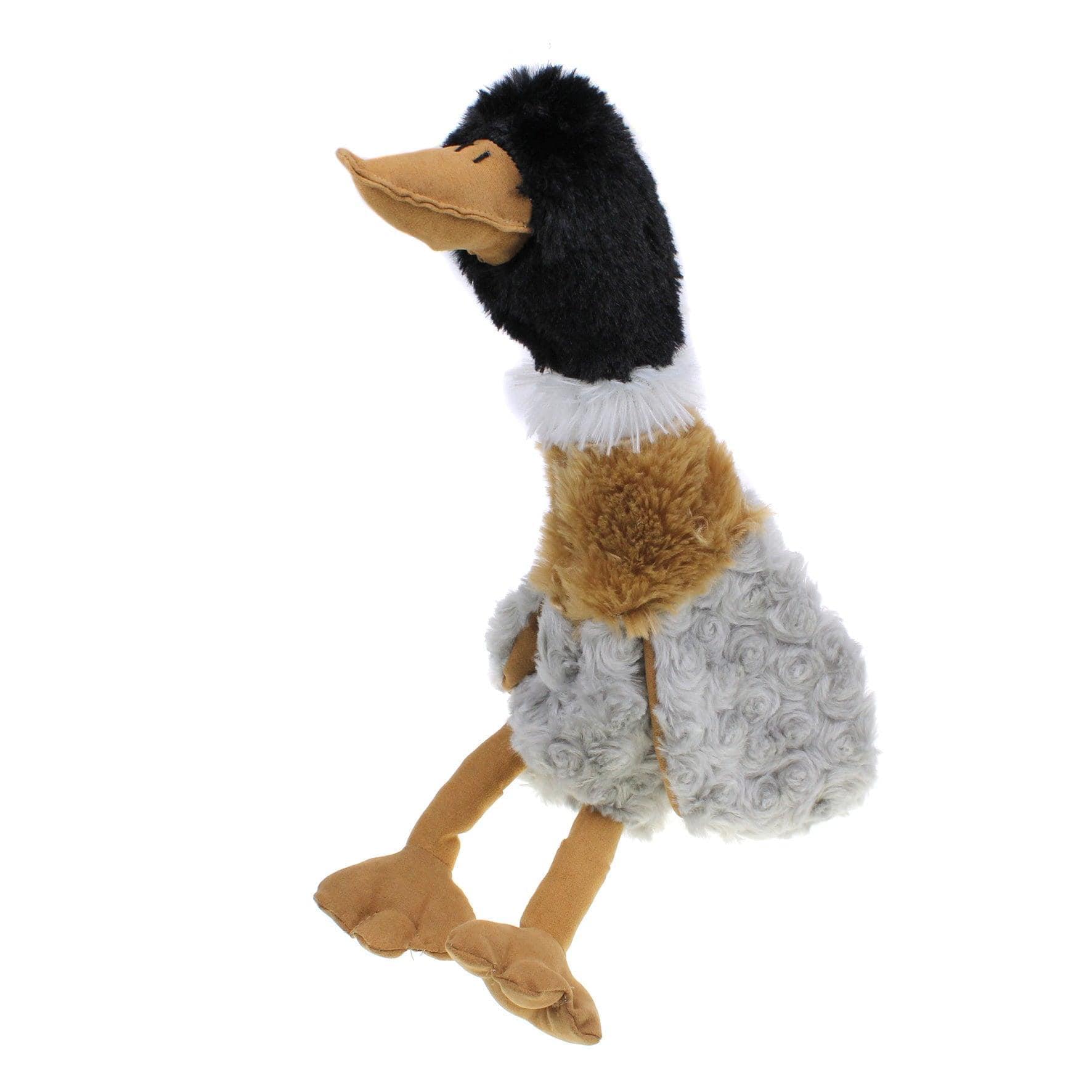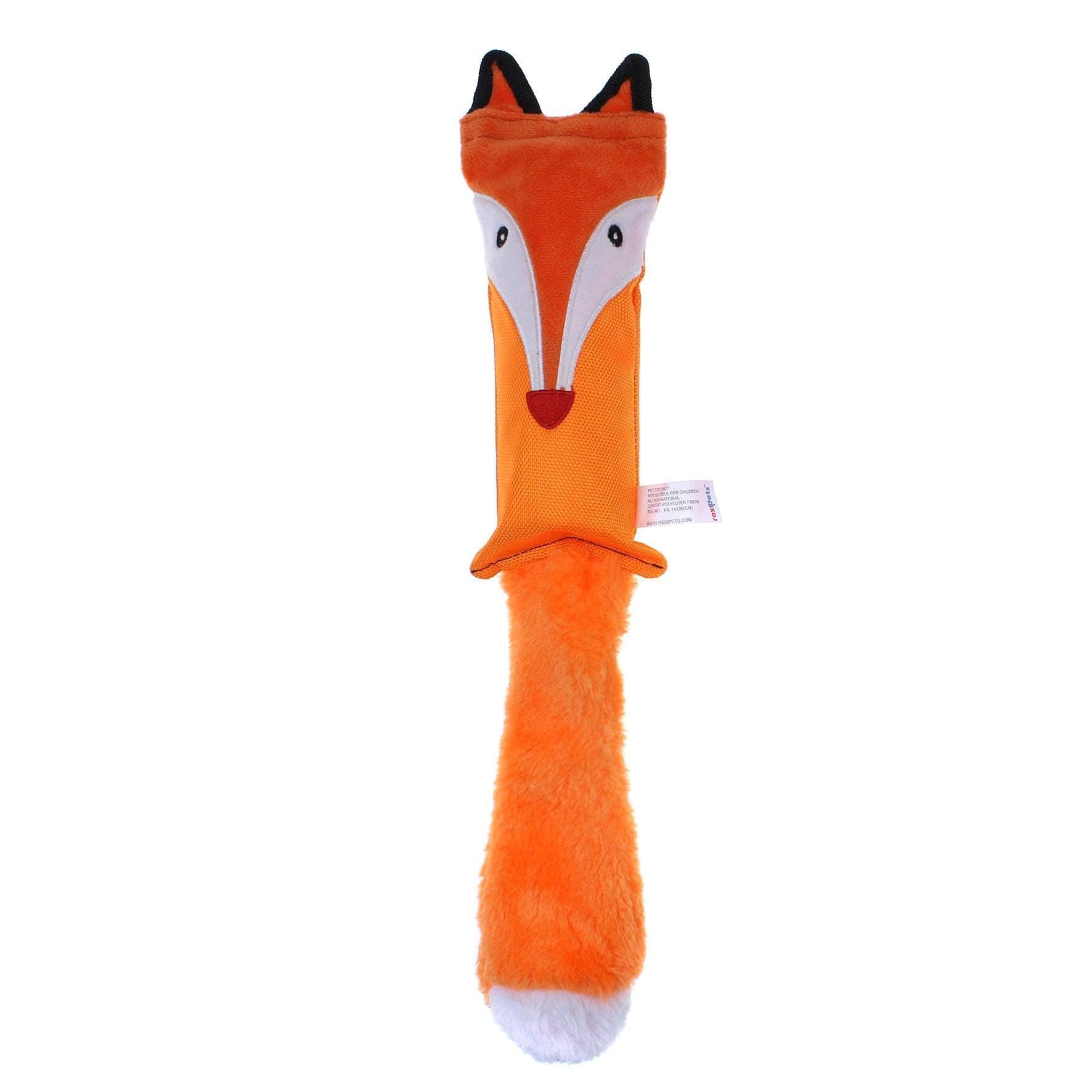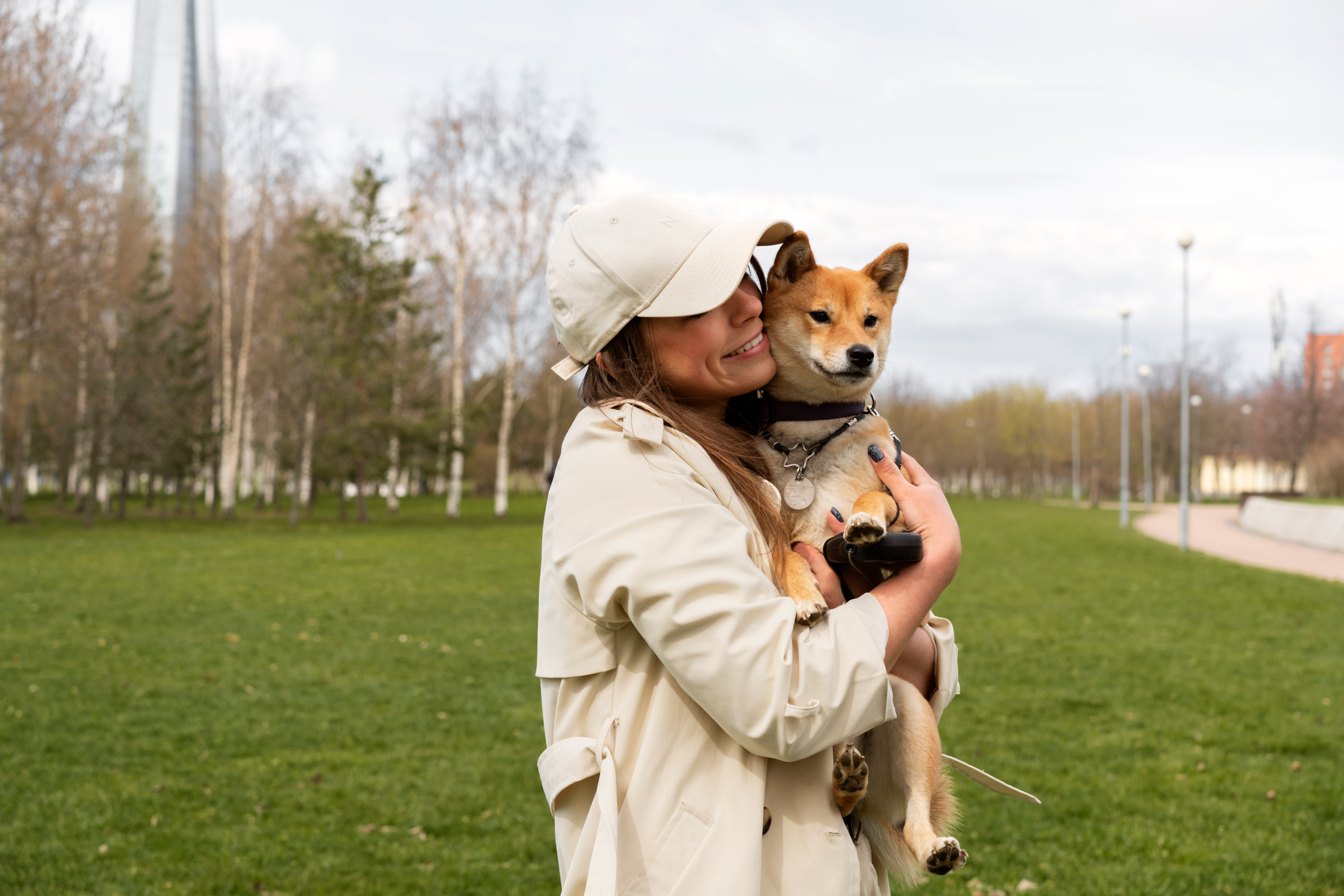
Have you ever found yourself dreading the thought of taking your furry friend for a walk during the chilly winter months?
As the temperature drops and the days get shorter, dog owners may find it challenging to maintain their pets' exercise routines.
However, with a few simple tips and a bit of preparation, winter walks can be enjoyable and beneficial for both you and your pup.
In this blog, we'll delve into the world of winter dog walking, exploring the importance of regular exercise for dogs, the things to keep in mind during colder weather, and a variety of practical tips to make sure that your walks remain safe and enjoyable.
From choosing the right gear to understanding the signs of discomfort in your pup, we'll cover it all to help you navigate the winter wonderland while keeping your dog warm, happy, and healthy.
So, grab your leash, put on your warmest coat, and let's embark on a journey to uncover the tips for walking your pup in the winter.
18 Tips for How to Walk Your Dog in Winter

Walking your dog in winter is important, even if it's cold outside. Dogs need exercise all year round for their mental and physical well-being.
Winter walks can be tough, so you must protect yourself and your dog from the cold.
We have 25 tips to help you and your dog stay safe and happy during winter walks. These tips cover simple things like keeping warm and noticing if your dog is not comfortable.
-
Plan ahead of time
In wintertime, it's important for dog owners to plan their walks in advance. Check the weather and how cold it feels before you go out with your dog.
Sometimes, it's colder than you think, and your pup might need a warm jacket.
Instead of going on a long walk with only one way back, choose a busy path with different walk lengths in case the weather changes. Save the fun adventures for clear, cool days.
-
Look for signs
Understanding your dog's breed is helpful for knowing how well they handle the cold, but it's equally important to pay attention to signs like your dog's body temperature.
Dogs, especially senior dogs, will show when they've had enough of the cold.
It's okay to let your dog have fun outside in the cold, but never leave them alone for too long. This is especially true for small breeds or those with less cold protection naturally, even if they're wearing a coat and boots.
-
Keep it short
On extremely cold days, it's important to bring your dog inside after short periods of time in the snow. Keep walks to less than 30 minutes.
While dogs with more body fat can deal with longer walks, especially if dressed appropriately, it's still advisable to opt for multiple brief walks on extremely cold days rather than one extended outing.
-
Trim your dog's toe hair
Trim the hair between your dog's toes short to make winter walks more comfortable. Snow can gather on the paw hair, leading them to be temporarily unable to walk or making it hard and painful for your dog to walk.
-
Invest in Dog Boots
Wearing protective booties is a practical and useful requirement for many dogs, and it can be helpful for any dog walking in winter.
Ensuring your dog's paws are shielded from harsh weather conditions like snow and ice is crucial to prevent dryness and quick chilling.
Winter dog boots also provide protection against salt and chemicals used on streets to melt ice, helping your dog tolerate the cold ground better with booties.
-
First Aid
If your dog accidentally gets splits or open sores, it's important to provide appropriate first aid care. Begin by cleaning the wound with water.
Apply an antibacterial spray or pet-friendly lotion to prevent infection, and in case of urgency, a small amount of Neosporin can be used. Wrap up the wounded area with clean gauze or a pet bandage.
During the healing phase, limit your dog's walks to promote recovery. If you must walk your dog while their paw is still healing, ensure they wears boots to keep it safe and safeguard the wound from reopening.
-
Wipe your dog's paws
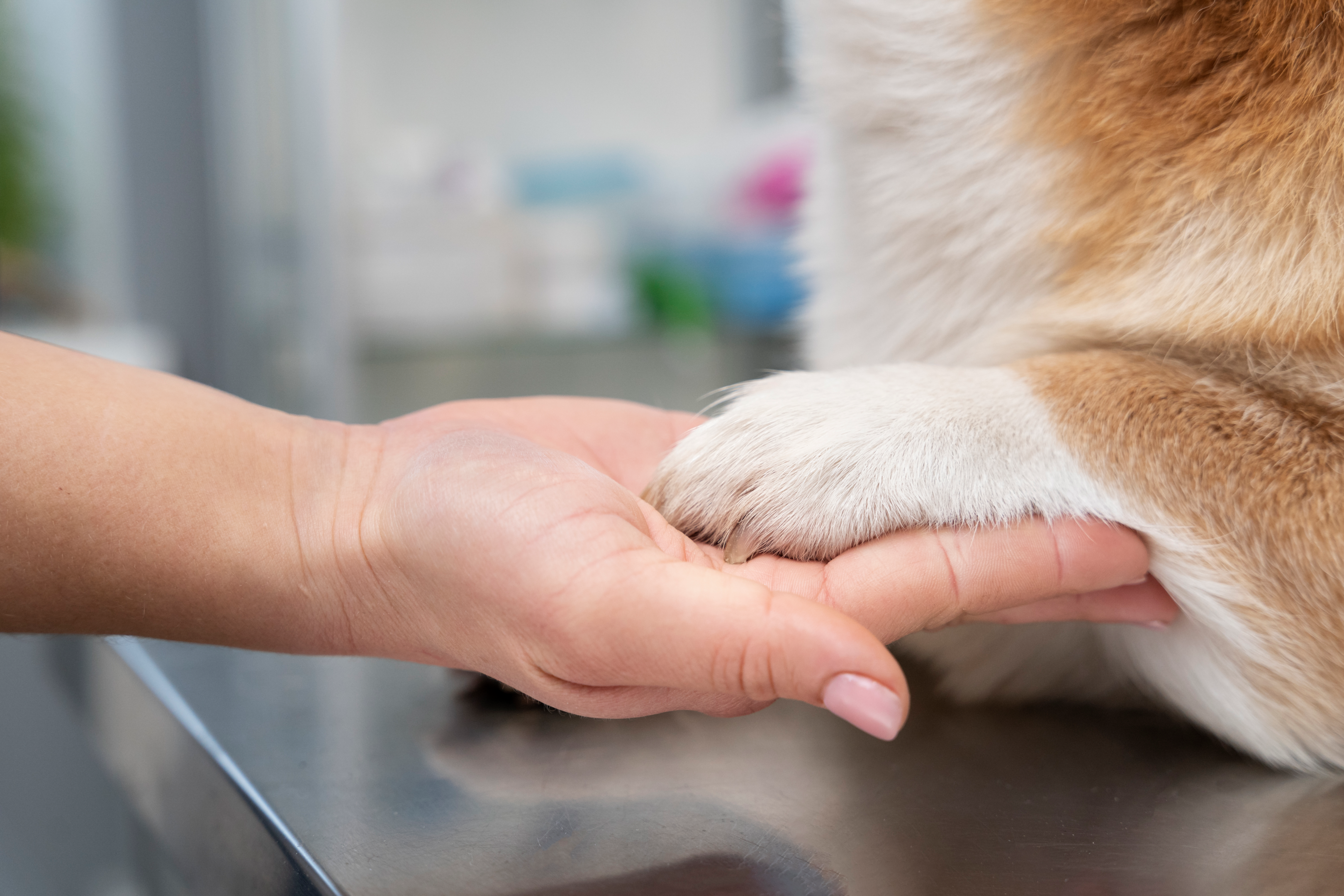
After your dog's winter walk, it's crucial for pet owners to wipe their pup's paws. Use a warm and damp washcloth and a towel for drying, or go for pre-moistened pet wipes for convenience.
This cleaning process helps eliminate salt or ice-melt chemicals from your dog's paws, preventing your dog from licking potentially harmful chemicals or substances.
-
Moisturize your dog's paws.
The cold, dry air in winter can make your dog's paws rough, cracked, and prone to splitting. Once you've cleaned your pet's paws, apply a pet-friendly conditioner or paw wax to prevent them from becoming dry.
Make sure that the moisturizer you select is safe for dogs and non-toxic, considering that your pet might lick her paws.
Coconut oil is a great option, serving as both an efficient moisturizer and a healthy source of fats and vitamins when ingested.
-
Layer up your dog
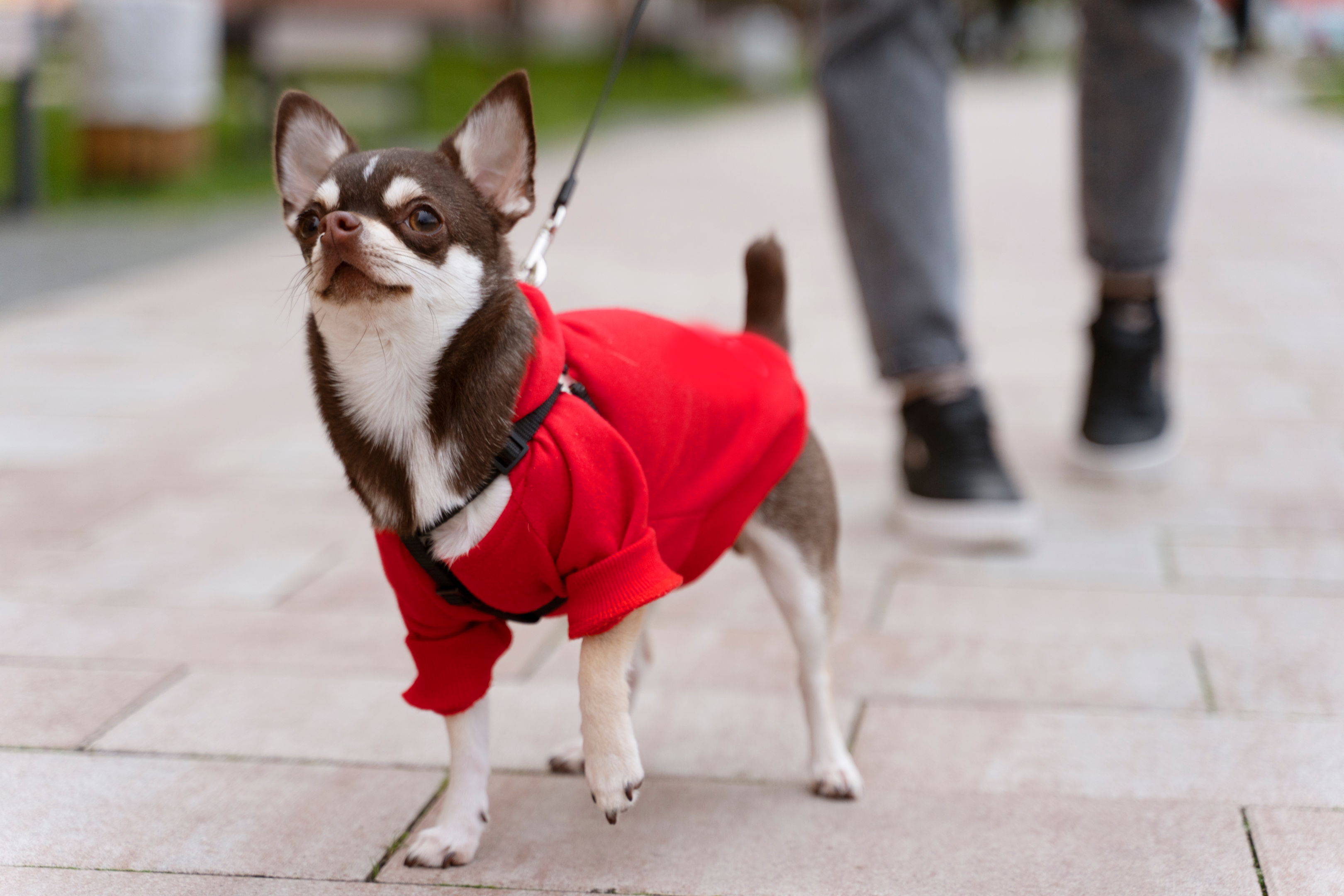
Even though jackets and sweaters may look funny on dogs, they reduce the impact of wind chill.
While some dogs naturally have a fur coat that can handle cold temperatures and repel moisture, many dogs lack this feature. Protective attire can act as a windbreaker, shielding your dog from wind chill.
Small dogs or those with short hair would need an extra layer of clothing in colder weather. Take your dog for a walk with a sweater to provide added protection against the cold and wind. If you live in an area where it rains a lot, consider investing in a raincoat.
-
Stick to the sidewalks
Unless your dog belongs to a cold-loving breed like a Siberian Husky or an Alaskan Malamute, it's advisable to steer clear of deep snowdrifts during longer walks.
If the cold ice comes into contact with your dog's soft and exposed belly while on a walk, it can lead to quicker chilling.
Moreover, when planning your route, try to avoid areas that have been salted if you can.
-
Walk your dog during the daytime
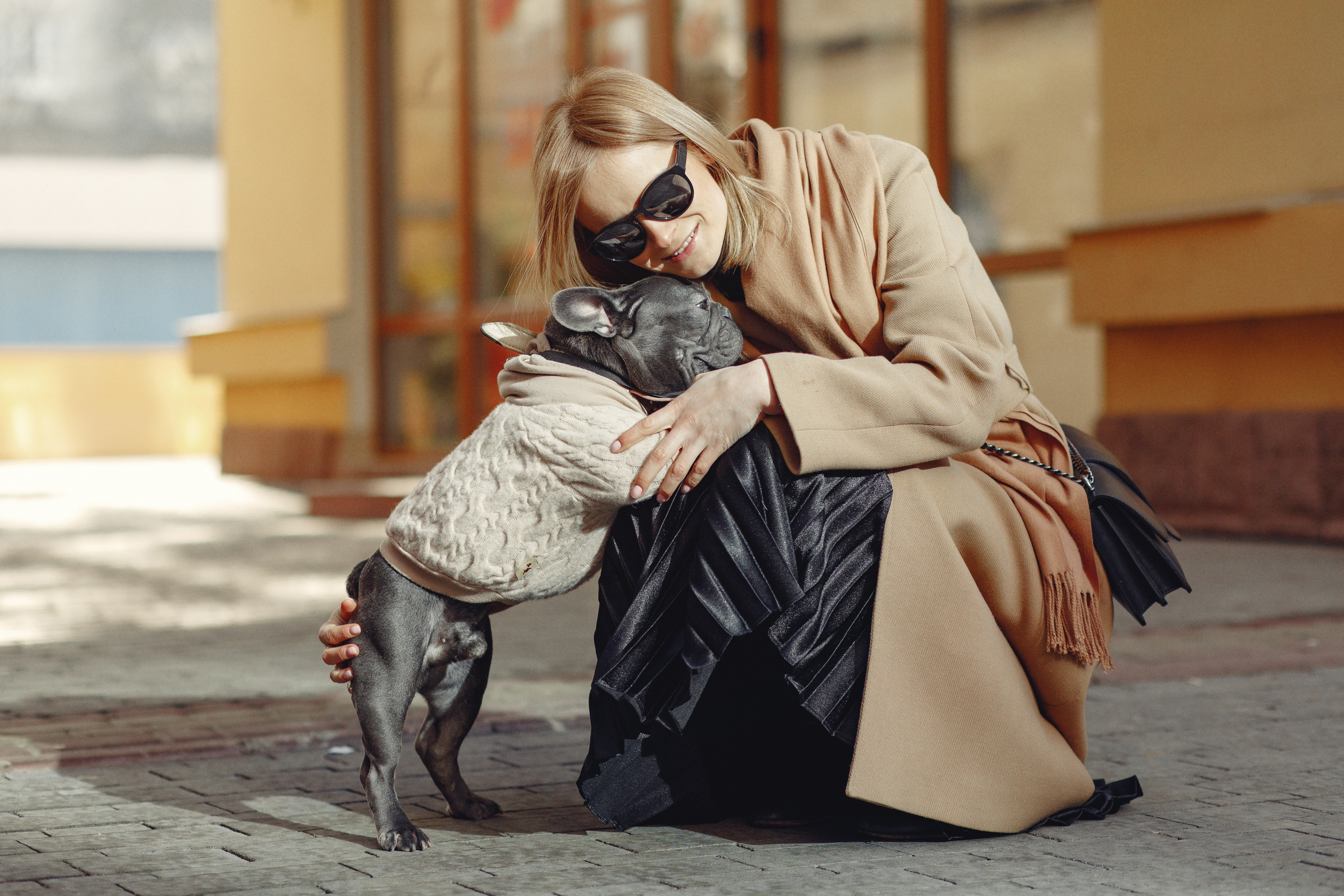
Plan your dog's daily walk during daylight hours. It is not only warmer for both you and your dog but also makes you more visible to vehicles in the sunlight.
While most healthy medium or large dogs may still enjoy a walk in various weather conditions, smaller dog breeds often resist going out in the cold, so try to take them out when the sun is out.
-
Wear reflective clothing
During winter weather, daylight hours are shorter, and sometimes there is fog, too, reducing visibility.
To ensure safety during morning and evening walks, it's crucial for both you and your dog to wear reflective strips or clothing. Another option is using an LED collar or leash for your dog, ensuring increased visibility.
-
Watch out for your dog eating snow
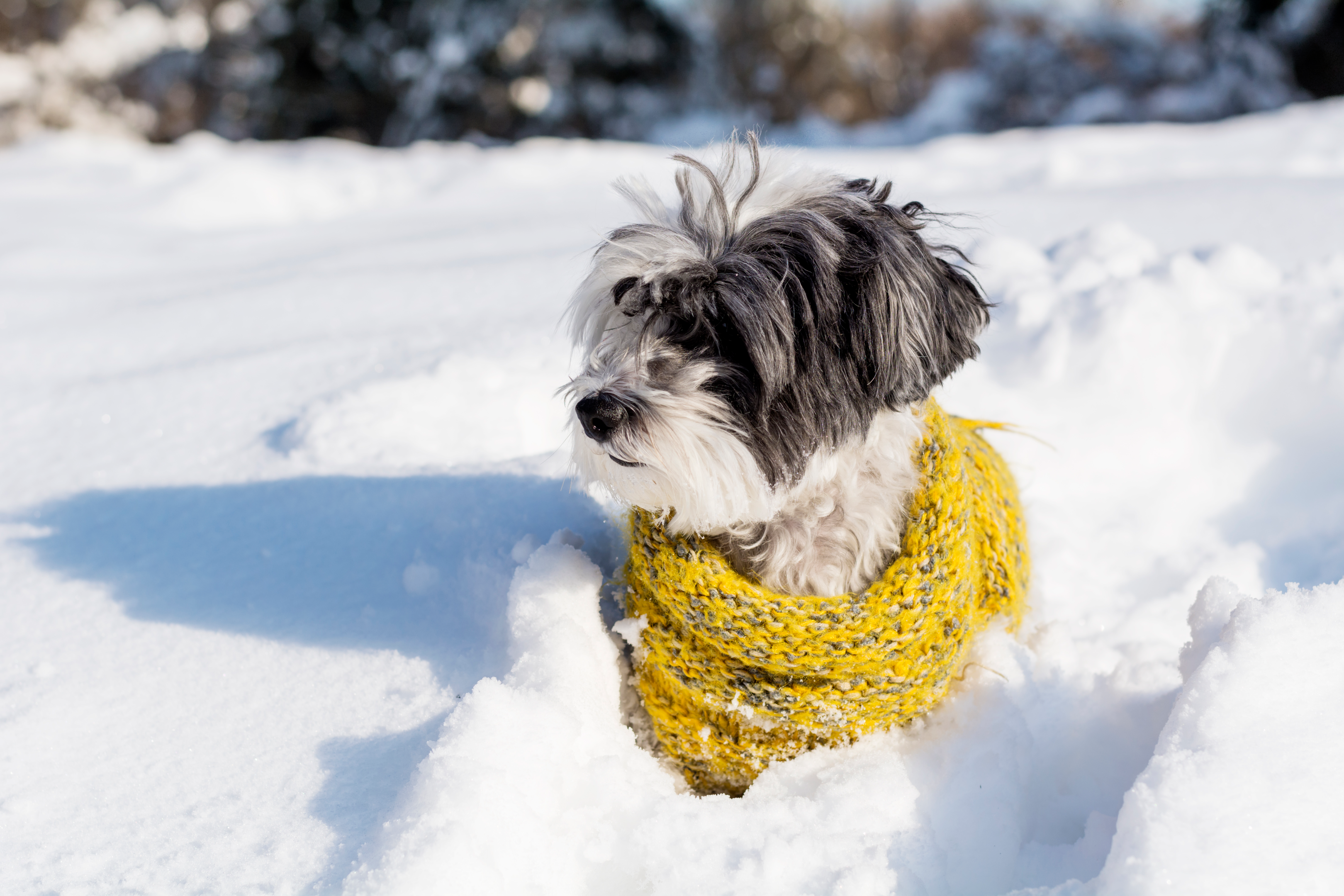
While it may appear harmless, even a small amount of snow is not suitable for your dog to ingest, and we're not just referring to the dirty kind of snow.
Consuming a bit of even the fresh snow is probably not harmful, but it does pose a risk. It can mess with your pup's ability to stay warm as their inner body temperature then drops.
Importantly, you never know what might be in the snow—antifreeze, toxic chemicals perhaps, or other contaminants. Basically, snow consumption can lead to digestive issues, including vomiting, in some dogs.
-
Watch out for frostbite
sFrostbite poses a genuine risk to pets, especially when they are too distracted by having fun in the snow, much like kids who might not realize it's happening.
Keep an eye on your dog's ears, nose, footpads, and tail, as these parts of your dog are the most likely areas for frostbite during snowy and freezing conditions.
If you notice signs of your dog's extremities getting too cold during outdoor activities, consider using physical stimulation to warm up their paws, tail, or ears.
-
Invest in the Rexipet Retractable Dog Leash
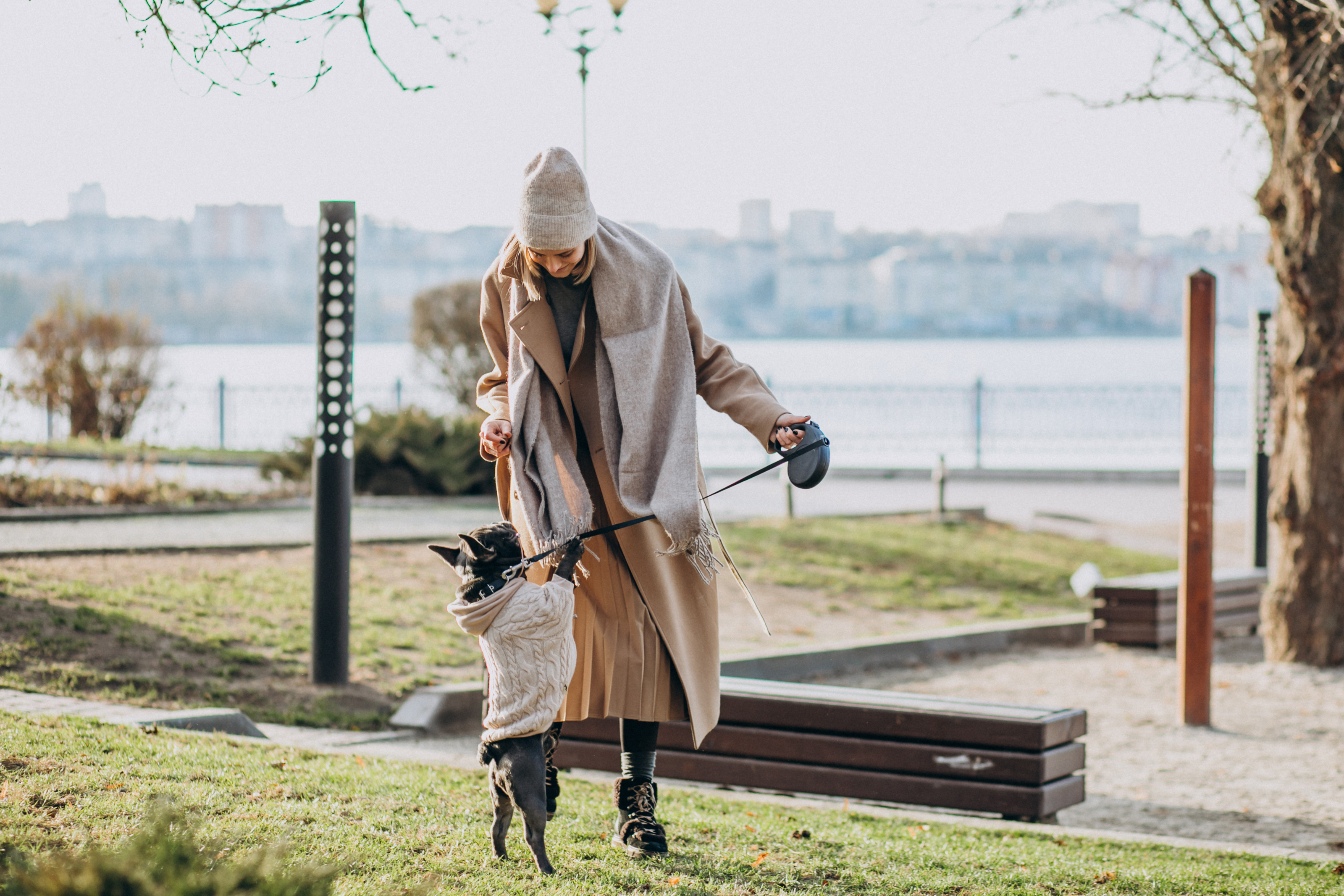
When you are around icy areas like frozen lakes or ponds, make sure your dog remains on a short leash and avoid letting them wander on the ice.
It's challenging to determine the ice's solidity, and there's a risk of your dog falling in, potentially pulling you along with them.
You can also invest in Rexipet's retractable dog leash; this sturdy leash is crafted from an exceptionally strong nylon cord, capable of supporting pets weighing up to 110 pounds.
The retractable rope can extend up to 16 feet, ensuring a 360-degree tangle-free experience for your dog while you stay in control.
-
After your dog's diet
When your pets spend more time outdoors during the winter, their bodies may require additional energy to cope with the colder temperatures.
In such cases, it becomes essential to adjust their food portions to meet the increased energy needs related to exposure to the chilly weather.
Conversely, if your dog spends the majority of its time indoors where the environment is typically warmer, you might find it necessary to slightly reduce their dog food portions to maintain a healthy balance.
-
Avoid metal
Avoiding metal objects in freezing temperatures is advised due to the risk of the tongue sticking.
However, this danger isn't limited to just your pet's tongue. When walking your pet in winter, it's important to avoid contact with metal lampposts, plates, manhole covers, electrical boxes, and similar objects, as they can carry the potential risk of electric shock.
-
Try alternative exercises
If the weather is extremely cold, and you're finding it challenging to figure out how to keep your dog active in the winter, don't worry!
During the coldest months, pet parents can consider enrolling in an indoor class with their dog or utilizing an indoor dog walking-only area to maintain physical activity levels during winter.
Final Words
As the winter chill settles in, taking your dog for a walk becomes an adventure that requires thoughtful consideration and lots of preparation.
Navigating winter walks with your furry friend can be an extremely beneficial experience when armed with the proper knowledge and tips.
From protecting your dog's paws to adjusting their diet and choosing the right gear to be mindful of potential hazards, these tips for walking your dog in winter aim to ensure both safety and enjoyment.
So, get ready to embrace cold, bundle up yourself and your furry friend in warm gear, and make the most of winter walks with your dog.
FAQs
Can I walk my dog in the snow?
According to vets, it's confirmed that walking your dog in colder temperatures, including snowy conditions, is completely fine.
Nevertheless, when walking in winter, certain precautions should be taken into account. Explore the option of using dog sweaters, jackets, boots, or socks to create a protective barrier between your furry friend and the cold weather.
Can I walk my dog in the snowy weather?
On super cold days, make sure to bring your dog inside after short walks in the snow less than 30 minutes. Even if your dog is a bit chubbier, it's better to go for a few short walks on really cold days instead of one long walk.
Do dog paws get cold in the snow?
Snow combined with extremely cold temperatures can cause burns or severely dry out your dog's paw pads during winter dog walks. Restrict their time outside during extremely cold periods, and make sure to check their paw pads for any signs of cracking.









